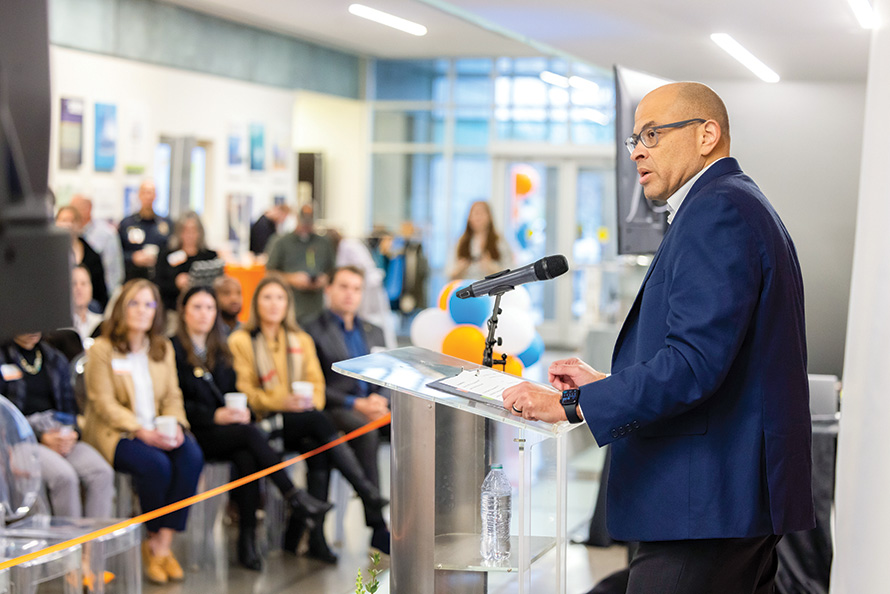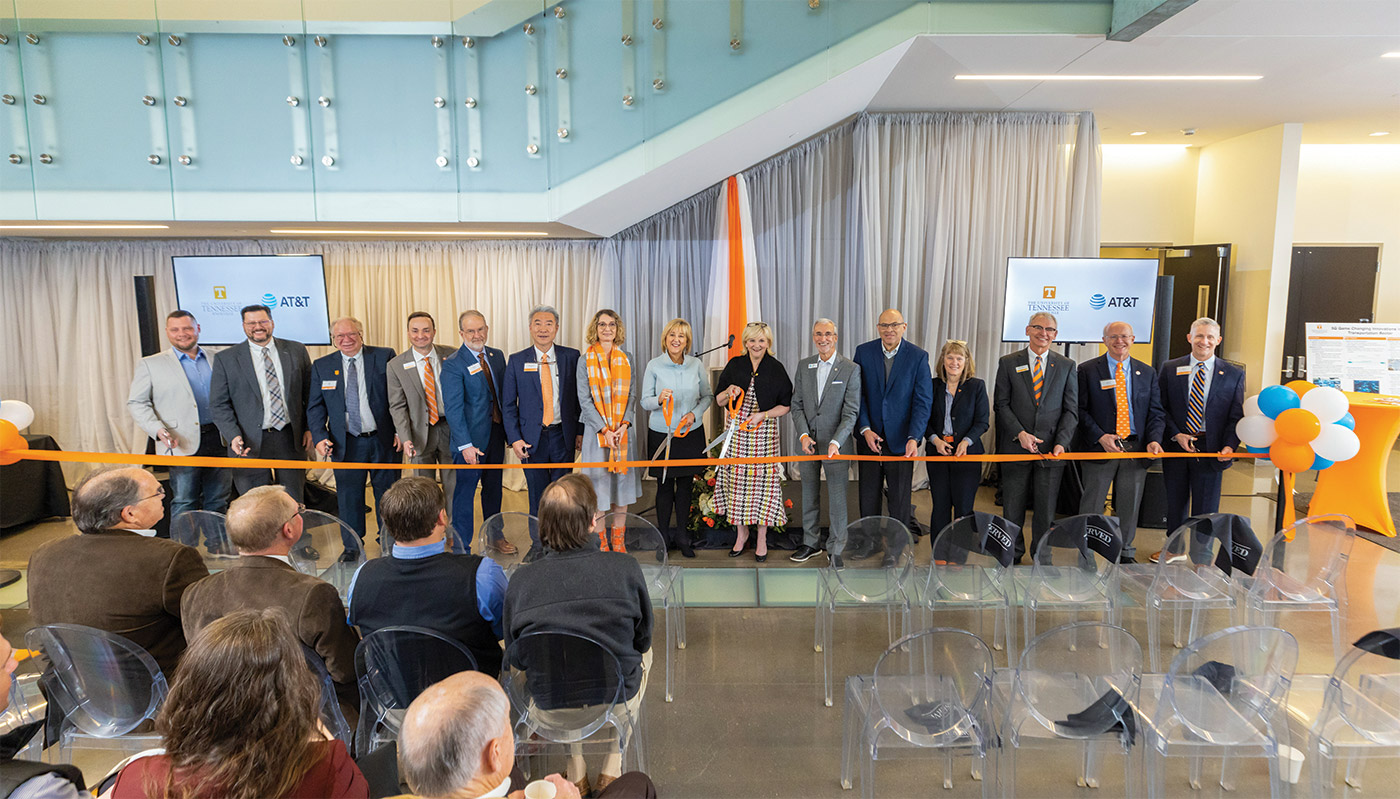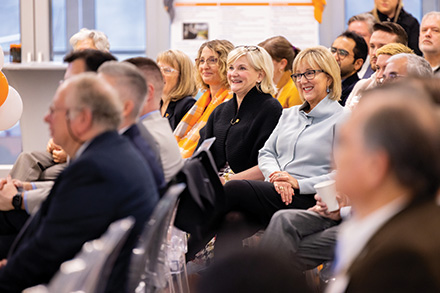The AT&T 5G Lab, recently dedicated at the UT Research Park at Cherokee Farm, is the latest step forward for the two organizations’ shared commitment to bringing high- speed technologies with meaningful uses to Tennesseans.
“Our communities gain major benefits when our faculty and students tackle real-world issues brought by companies who also live and work in those same communities,” said UT Chancellor Donde Plowman. “That’s what is happening today between UT and AT&T— we are committed to making life and lives better.”
UT is one of only six universities in the nation to advance research initiatives in collaboration with AT&T, having agreed in 2021 to work with AT&T on research projects using a 5G+ millimeter wave spectrum network in a lab environment.

“We have a long history of working with UT on projects that explored how to capitalize on emerging advanced technologies, and now we’re looking forward to what faculty and students here will learn about the capabilities of 5G high-speed broadband,” said Joelle Phillips, president of AT&T Tennessee. “It is exciting to think that innovations and applications which will improve lives tomorrow may begin as a what-if conversation in this new lab.”
Aly Fathy, a professor in the Min H. Kao Department of Electrical Engineering and Computer Science who specializes in 5G-related research and technology, speaks highly of the possibilities that the new lab could enable.
“There are many advantages that 5G and 5G+ have over previous generations of wireless technology, including the key areas of speed and accuracy,” said Fathy. “Through this lab, we will be able to bring about improvements across a number of fields that impact people’s lives for the better.”
Research conducted in the new lab could have far- reaching potential applications:
- In transportation, near-real-time decision making and control of vehicles, traffic monitoring, network optimization, secure 5G communications for transportation systems, and allocation of appropriate resources to different transportation services
- In telemedicine, predictive modeling to allow for early detection of diseases, unobtrusive non-contact patient monitoring, and remote surgeries
- In smart agriculture, low-cost and robust hardware; sensors for crops, soil, and animal monitoring; self- driving tractors; and livestock health monitoring
- In sports, immersive and interactive sporting experiences, virtual tours of stadiums, and player and team performance data
As an example, a demonstration at the lab’s dedication in January showed how augmented reality could assist a technician performing critical work on an airplane’s landing gear while working with a subject matter expert in a remote location. Similar applications exist in fields like incident management and security, in which determining exact locations of people and assets are critical.


